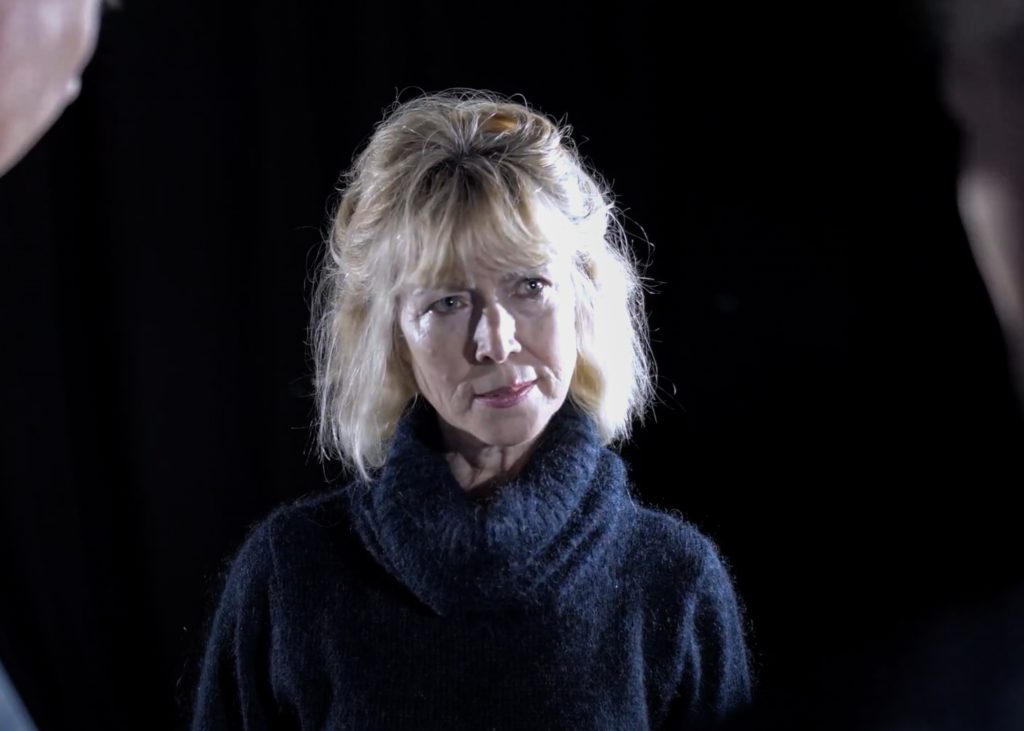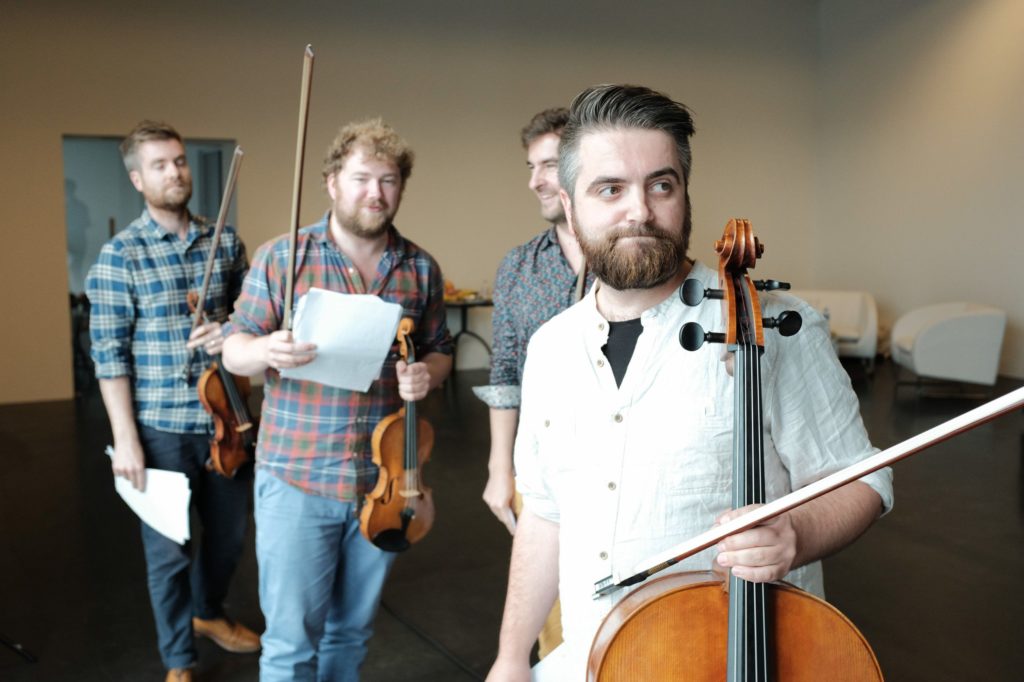
Dominic Goodwin’s Pat, left, and Thomas Frere’s Alex in Clap Trap Theatre’s Switcheroo, played comically
SWITCHEROO writer Tom Needham is a BAFTA-nominated North Yorkshire playwright and scriptwriter who lives on a very small farm with, at the last count, three cats, three dogs, six ducks, seven chickens, five pigs, two horses, two turkeys, two llamas and one conure parrot by the name of Pearl.
He has an impressive writing stock too with 100-plus theatre and TV credits: 65 episodes of The Bill over 25 years; episodes of Casualty, EastEnders, Wycliffe, Dangerfield, Dalziel & Pascoe, Silent Witness and more, plus his own series, Cold Blood and children’s show Retrace.
Needham is in his 13th year of writing for Ryedale company Clap Trap Theatre, Switcheroo being the latest addition to the ghost story The Room Upstairs, The Wrecker, The Rape Queen, Impact and Blindfold.
Rehearsed in Needham and company co-founder Cal Stockbridge’s converted barn near Pickering, shared with a small colony of bats, Switcheroo is heading out on a month-long tour, opening at York Theatre Royal Studio this week and running until June 24.
Directed by Riding Lights Theatre Company artistic director Paul Birch, opening night timer in hand, Switcheroo is spun on a simple premise: “It’s not what you say, it’s the way that you say it”.
Three squabbling siblings, stuck in the mud of midlife, are confronted by a bombshell revelation in their mother’s will when charged with the task of scattering her ashes.
In keeping with the two faces of theatre, the play is first played out as a rollicking comedy, nudging into farce. Post-interval, the same play, the same dialogue, is replayed seriously seriously by the same actors, but now playing different roles, having done their own switcheroo.
And the way they say it most definitely changes, to the point where you wonder how it could ever have been a comedy in the first place, such is the impact in particular of Dominic Goodwin’s embittered, drunk, wounded Alex, the one who had looked after their mother in her last days.

Cal Stockbridge’s Pat in Switcheroo, played seriously straight
It would be wrong to divulge the plot, but let’s just say it forces Alex, Sam and Pat to confront their past, their relationships, their parental bonds, what is true, what is false, as family secrets bubble to the surface.
Thomas Frere transfers from wild-haired, wild-eyed, heavy-drinking Alex, shirt buttoned erratically, to the uptight, neat, trim, testy Sam, trying to hold things in check. Cal Stockbridge transforms from guarded, glacial Sam to exasperated Pat.
Goodwin, always a larger-than-life presence on stage, all the more so here, changes from the spoilt child of the family to the emotionally bruised Alex, albeit that both his characterisations are marked by self-pity.
Just wondered: could the production do its own switcheroo, where one performance is comedy first, then straight drama post-interval, and the next night would be played vice versa?
Needham answers that question in his programme note: “For a long time, I thought the straight version should go first and then be hammed up in the second, but it just didn’t work that way round.
“The straight version has to be performed second because we learn so much more from it – it contains the pain, the emotion and the truth.”
How right he is, but so too is his observation that Switcheroo is “two completely different plays. And yet, it isn’t.”
Clap Trap Theatre in Switcheroo: A Story Told Twice, York Theatre Royal, tonight, 7.45pm; tomorrow, 2.30pm and 7.45pm, all sold out; Helmsley Arts Centre, May 31, 7.30pm; The Old Dining Room, Thirsk Hall, Thirsk, June 5, doors from 6pm; Georgian Theatre Royal, Richmond, June 6 and 7, 7.30pm; Hutton Rudby Village Hall, June 8, 7.30pm; Askrigg Temperance Village Hall, Leyburn, Wensleydale Community Arts Festival, June 11, 7.30pm; Birdsall House, Birdsall, Malton, June 24 (no details available).
Box office: York, for returns, 01904 623568 or yorktheatreroyal.co.uk; Helmsley, 01439 771700 or helmsleyarts.co.uk; Thirsk, thirskhall.com/events; Richmond, georgiantheatreroyal.savoysystems.co.uk. For Hutton Rudby and Askrigg, go to claptraptheatre.com/2025-tour/. For Birdsall, phone 01944 316000.





